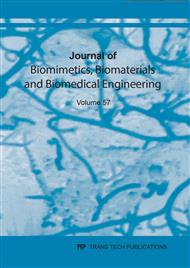p.1
p.9
p.17
p.27
p.37
p.47
p.57
p.65
p.77
Development of a Stretchable Circuit and its Integration Method on Knit Fabrics for Lower Back Injury Prevention
Abstract:
Advancements in wearable technology and smart textiles have also opened new possibilities in the sports and medical fields. One of the examples of a relevant application case can be found in cycling. This paper expands on previous research on stretchable electronics on knit fabrics. It describes the development of stretchable circuits for the lower back position and motion tracking to prevent back pain in recreational (road) cyclists by combining electrical and textile engineering with insights generated in rehabilitation sciences and sports physiotherapy. The research process included developing and testing of the functional circuit integrated into a cycling jersey. Thermoplastic polyurethane films were used for the textile integration process to achieve maximum comfort and after-life disassembly possibility. Reliability tests, e.g. washing (ISO 6330-2012) and tensile tests, were conducted. It is concluded that while mechanical stress during washing cycles remains a serious concern for reliability and durability, the use of water-repellent thermoplastic polyurethane sealing seriously reduces the damage caused by water and detergents.
Info:
Periodical:
Pages:
17-26
Citation:
Online since:
July 2022
Keywords:
Price:
Сopyright:
© 2022 Trans Tech Publications Ltd. All Rights Reserved
Share:
Citation:



